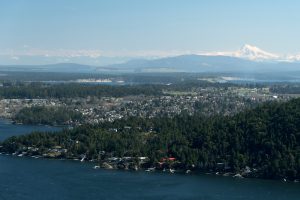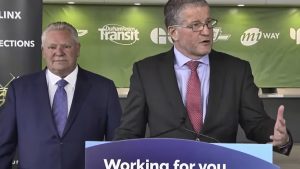Last year, the Residential and Civil Construction Alliance of Ontario commissioned a four-part video series that has had an impact on conversations around the GTA, focusing on the need to minimize political interference in transit planning.
Once a viable plan has been arrived at through evidence-based decision-making, however, the videos emphasize the need to maximize political support for the approved plans.
Prime examples of political interference cited in the videos include:
— former premier Mike Harris’ cancellation of the just under construction Eglinton subway 20 years ago and how then-North York mayor Mel Lastman successfully lobbied to have the Sheppard subway built instead; and
— former Toronto mayor Rob Ford killing predecessor David Miller’s Transit City plan, including the Sheppard LRT project in Scarborough in 2010.
Transit historian Ed Levy, in his book Rapid Transit in Toronto: A Century of Plans, Progress, Politics and Paralysis, has written about many worthy projects that have been proposed in the last 100 years but abandoned for various reasons.
Mr. Levy, for example, is adamant that a regional relief line (also referred to as a downtown relief line) is a critical project which will provide options for suburban commuters and take pressure off the Yonge and Bloor lines as well as the highly congested Union Station hub. Andy Byford, the widely respected chief general manager of the TTC, openly concurs with this opinion.
So, while reading Greg Sorbara’s recently released book about his life in politics, it is noteworthy that there is a sub-chapter called "The York Subway Saga" as it substantiates the "political interference" theme.
The well-written work starts out in 1986 with the newly elected MPP "with a dream" drawing a line on a map from the terminus of the University-Spadina subway at Wilson Station to York University — at the border of Toronto and Vaughan — for his colleague Ed Fulton, who was the transportation minister. Over his career, Mr. Sorbara has proven that he is one of the most astute politicians around and clearly the former finance minister recognizes that "the politics of transit in Toronto can best be described as a comedy of errors."
So far so good.
But one statement that perplexed me appears just prior to his "comedy of errors" point. Sorbara writes that when Bob Rae became premier in 1990, he was "entitled" to make Eglinton the top subway priority because "priorities change when governments change." By this logic, both the Harris and Ford examples above are acceptable political interventions.
Even if Eglinton had more merit than the Spadina subway extension, that’s a damning indictment of the planning process for transit.
Why should public transit be any different from any other critical infrastructure?
Do we ever hear a politician say, I think this trunk sewer line should go here instead of here? No, because politicians generally don’t have the engineering or operational expertise to make such decisions.
It would have helped if Mr. Sorbara had added the caveat that priorities are guided by the best evidence provided by transportation specialists, and that government decision-makers weigh that evidence based on political realities.
Let’s look at the "Transit City" Light Rail Transit plan of 2007. It had a number of good attributes such as building a wider network across the entire city at a lower cost per kilometre than subway expansion. But if it had been built, it would have added more ridership to already crowded subway lines, principally because Transit City lacked any consideration of a U-shaped link through Toronto’s financial district (Canada’s largest focus of employment by far). This relief line would take pressure off of stations such as Bloor-Yonge by intersecting with east and west legs of the Bloor-Danforth subway.
In addition, Mr. Miller was not enamoured with the prospect of building the Spadina subway extension as it did not fit into his LRT plans.
On this subject, Mr. Sorbara makes another jaw-dropping statement by writing that Mayor Miller "should have been thrilled at the prospect of the province providing $670 million for more subway infrastructure, regardless of where it went." [emphasis added.] This is like saying you have a certain amount of money to either make a mortgage payment, or top up your RRSP—it really doesn’t matter where the money goes.
Sorbara also provides a behind-the-scenes look at the horse trading that took place with federal finance minister Jim Flaherty. Flaherty wanted a commitment for provincial funding of the Highway 407 East extension through his riding in exchange for federal funding support of the Spadina subway extension.
A little later in the book, Mr. Sorbara makes a number of astute observations about the importance of being a team player in party politics.
He is, of course, correct by commenting that the 2011 Liberal provincial candidate Sarah Thomson "freelanced on policy" by advocating for a subway under Queen Street but is doubly wrong in the following statement: "First, it’s almost impossible to build a subway under Queen Street. Second, of all the ridings in Ontario, which one do you think already has the greatest concentration of public transit? Yes, Trinity-Spadina."
See tomorrow’s (May 7) DCN for the concluding part in this two-part column. This piece originally appeared in ReNew Canada.
Andy Manahan is Residential and Civil Construction Alliance of Ontario executive director. Send comments to editor@dailycommercialnews.com.






Recent Comments
comments for this post are closed